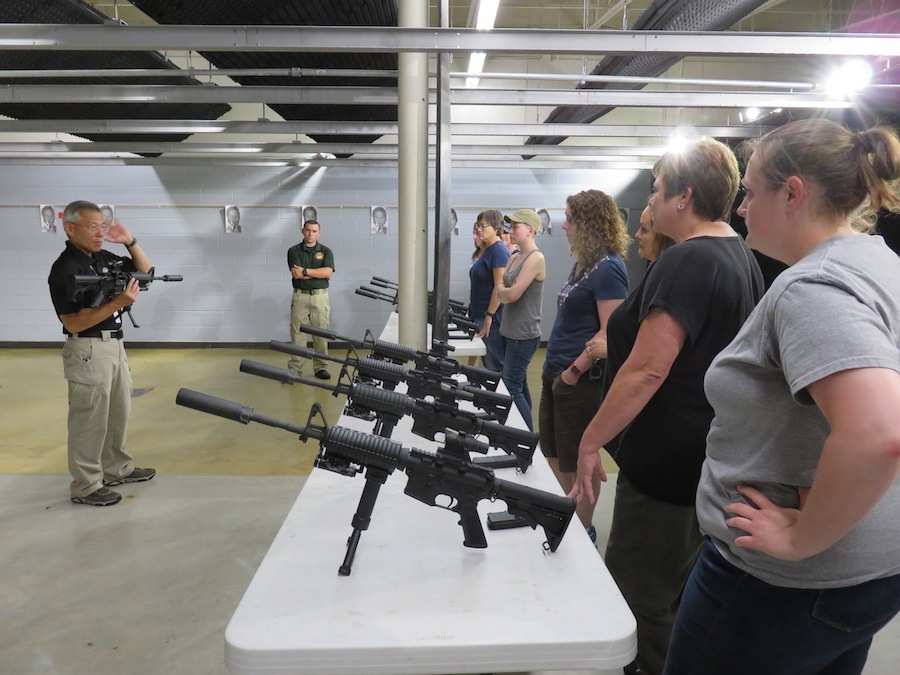Detective Sergeant Carl Catchemall studied the bloodstain pattern on and next to the ticking cow clock hanging on the kitchen wall. He stood there, staring, for what seemed like an eternity before turning toward his partner Hank Handsup. Then he tipped his bald, oval-shaped head back toward “the cow wall” where reddish splotches and dots of once-oozing blood contrasted sharply against the freshly painted, snow white surface. The cow’s tail moved from side to side with each tick and tock of the timepiece.
Tick Tock …
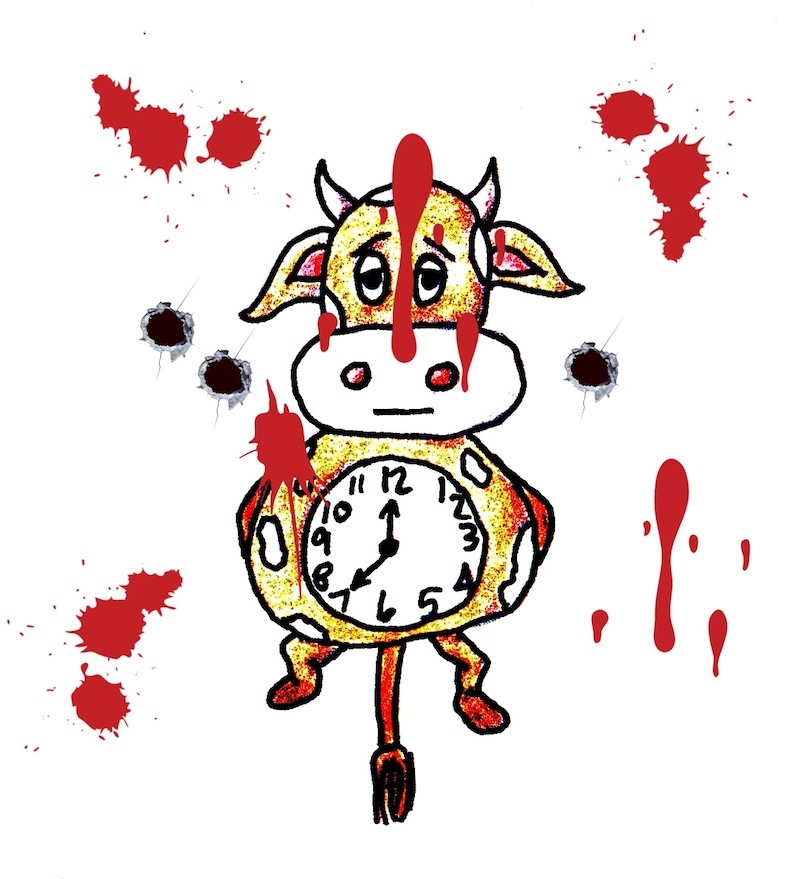
“I believe, Hank,” said the wise detective, “that our killer was right-handed, shorter than your own meager five-and-a-half feet, and was standing, not sitting, quite close to our victim, poor Mrs. Ima Ghostnow, when he pulled the trigger on what was most likely a revolver. That, my friend, is what I believe happened to our unfortunate victim.”
Tick Tock …
In the real world, to reach such a solid conclusion, it’s a must that detectives conduct a comprehensive bloodstain evidence investigation, using proper tools, techniques, supplies, equipment, and training. And, of course, experience always helps.
A good bloodstain training class typically uses actual blood, because nothing else accurately mimics the real stuff. Although, a decent substitute for the real deal is a mixture of Karo syrup and red food coloring.
During training classes students are exposed to nearly every type real-life scenario imaginable, but the first order of business is to learn the basics—characteristics of a blood drop.
Characteristics of a blood drop
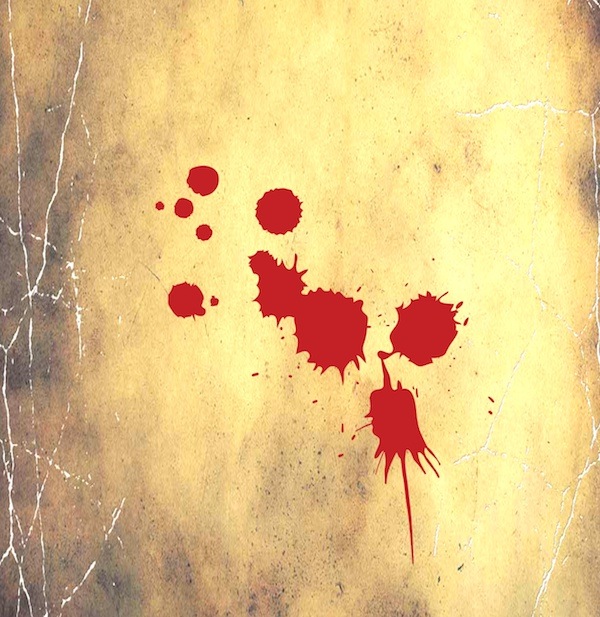
– blood drops are formed by gravity
– blood drops cannot break apart unless contacted by an outside force
– larger drops travel further than smaller drops (due to mass, not size)
– blood drops always travel in an arcing path (impact injuries)
– size ranges from a few millimeters to few centimeters
– volume of a drop of blood is in direct proportion to whatever it’s dropping from (ax, stick, arm, leg, etc)
Crime scene investigators typically measure bloodstains that hit surfaces on the way up, not stains made by blood that’s on its way back down. Stains made when traveling upward are much more accurate for use as evidence because gravity is not as much of a factor in the pattern’s formation.
Types of Bloodstain Patterns
Impact – caused by high-velocity or medium-velocity wounds—gun shots or blows by an object such as a baseball bat or hammer.
Swipes (Wipes)– Caused by a bloody object being wiped across another surface. These stains are the reason for changing the name of the examination from “blood spatter” evidence to “bloodstain” evidence (not all patterns are caused by airborne drops of blood).
*Remember, terminology could and often does vary from one area to the next.
The Lingo
Cast-Off– Caused by slinging blood off objects in motion (a swing of a bloody hammer, or arm).
Drip and Flow– Caused when blood drops off one object onto another.
Projected– Caused by arterial spurts. Often seen in stabbings and cuttings.
The ability to effectively interpret bloodstain patterns is a science and an art. But, before investigators can dive into a crime scene, they must learn a bit of terminology, such as:
Angle of Impact– the angle formed between the direction of an individual drop of blood and the surface it strikes.
Back Spatter– blood that’s directed back towards the source of energy, such as a hand holding a firearm, or hammer.
Expirated blood – blood that’s forced from the mouth or nose where air (exhalation) is the propellant.
High Velocity Impact Spatter (HVIS)– bloodstain pattern caused by a high velocity impact, such as those caused by gunshots or fast moving equipment or machinery (saws, drills, etc.)
Point of Convergence – the point (two dimensional) where the direction of travel (blood droplets) intersect. Can be used to help determine where the victim was standing when the fatal injury was delivered.
Point of Origin –the point (three dimensional) where the direction of travel (blood droplets) intersect.
Stringing – a method used to determine the point of origin. Investigators tie strings at the blood drops, following the direction of travel. The point where the strings intersect is the point of origin. Lasers are sometimes used in lieu of strings.
Stringing You Along!
So what are the tools needed to conduct a proper investigation of bloodstain evidence? Well, for starters …
Luminol
Luminol is a chemical that exhibits a bluish-white glow (chemiluminescence) when mixed with an appropriate oxidizing agent. It reveals the presence of iron in hemoglobin, even in the slightest traces of blood found at crime scenes. In fact, Luminol is capable of detecting blood even if it’s been cleaned away, and in situations where the scene has been altered to the point where there’s no indication that a crime was committed. The older the stain the more intense the reaction will be. By the way, Luminol is not recommended for use on visible or wet blood, and the area must be photographed prior to it’s use because the glow tends to fade quickly.
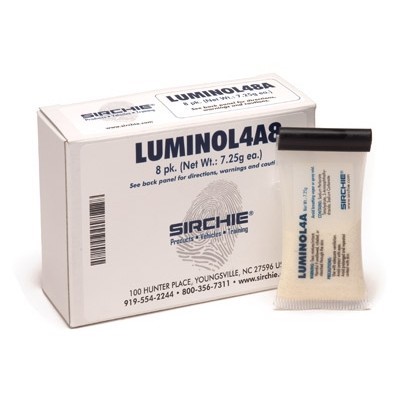
Photo – Sirchie
When your fictional detectives find themselves searching a property with hopes of locating blood evidence, here are some places they should look: kitchen and bathroom sinks and their drains. The same for tubs and toilets. The cracks between moldings and walls and floors, and at the base of tubs and toilet tanks, drains, cracks and crevices of wood. In addition, tile floors, grout, carpeting (beneath carpeting, especially if the carpeting appears to have been freshly cleaned), dirty laundry, hampers, bedding, ceilings, lampshades, beneath table tops and chairs, mops and mop buckets, sponges, door handles and knobs, knife blocks and, well, the list is as broad as the imagination allows.
When using Luminol to detect the presence of blood, it’s best to turn off all lights before applying it to the suspected/targeted area.
Keep in mind that chlorine bleach flashes brightly when contacted by Luminol. This is a sign that someone may have attempted to clean the area. It’s also important to note that iron and copper particulates will react with Luminol, giving a false positive for a suspected presence of blood. As always with presumptive testings (drugs, etc.), a laboratory test is required for confirmation or exclusion.
Other false positives for Luminol include iron and copper particles. Luminol is a blood search tool, and suspected blood areas must be confir
Luminol has been found to deteriorate DNA evidence, therefore DNA evidence should, if possible, be collected and preserved prior to the use of Luminol or similar products, such as BLUESTAR.

Photo – Sirchie
BLUESTAR is also used to determine the presence or absence of blood. However, what sets BLUESTAR apart from Luminol and other blood reagents is that its use doesn’t require total darkness, nor does it deteriorate DNA. Another benefit to BLUSTAR use is that the color, intensity and duration differs from that of Luminol. Therefore, investigators are less likely to confuse blood and false positives.
Bloodstain Pattern Investigations at the Writers’ Police Academy and MurderCon
This fall at MurderCon, instructor David Alford is scheduled to present a fantastic and wonderfully detailed hands-on class about bloodstain pattern investigations, called The Art of Blood. Here’s a “first look” at the workshop.
“Violent crimes and accidents frequently involve the interpretation of blood evidence. This class offers the attendee the opportunity to learn how to determine the velocity and angle in which a bloodstain impacted a surface, and the 3-dimensional point of origin – where injury or bleeding event occurred . The instruction will include presumptive testing techniques of stains thought to be blood, as well as, searching crime scenes for latent blood with luminol when circumstances dictate that the area was cleaned by the perpetrator. Attendees will participate in hands-on activities to reinforce the learning objectives.”
About MurderCon/Sirchie instructor David Alford:
David Alford is a retired FBI Special Agent with 21 years of experience investigating violent crimes, terrorism and other cases. He was one of the founding members of the FBI Evidence Response Team(ERT)and conducted crimes scene searches on domestic and international violent crimes and bombings, including the Polly Klaas kidnaping and murder, the Unabomber’s cabin and the 9/11Pentagon scene.
He worked in the Denver and San Francisco field offices and completed his career at Quantico in the FBI Lab ERT Unit.During the 6 years in the FBI Lab, he was primarily responsible for overseeing and teaching basic and advanced crime scene courses throughout the US and many other countries. In the 6 years before the FBI, he was a Forensic Serologist, Hair and Fibers Examiner and Bloodstain Pattern Analyst for the Kentucky State Police Crime Lab.After retirement, David taught crime scene courses around the world on behalf of the FBI and US State Department.David has been with Sirchie as an instructor and sales representative for Sirchie’s RUVIS and ALS products for the last 10 years.David loves teaching and allowing students to learn through hands-on training.
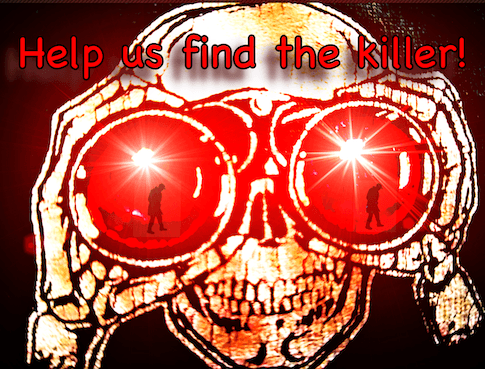
Speaking of MurderCon, there’s a murder to be solved there and it’ll be up to you to crack the case by using clues and evidence gained and gathered at the event. Oh, my, it’s going to be a “killer”!!
Details to be announced when the all new website goes live later this week. Registration is scheduled to open this month. Sign up date also to be announced later this week.
It’s exciting, and due to the new format space is extremely LIMITED. So be ready!!
Writers’ Police Academy presents MurderCon

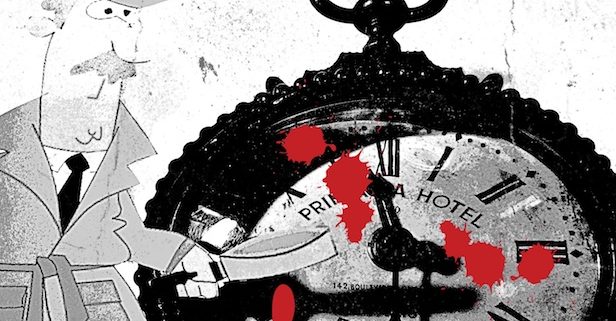
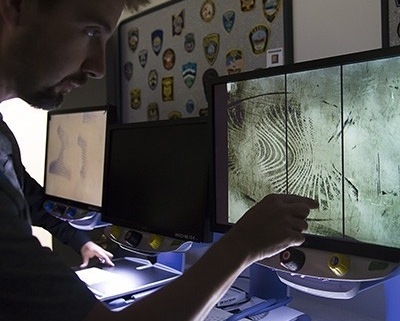


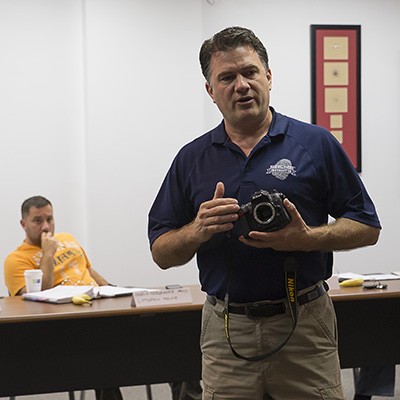
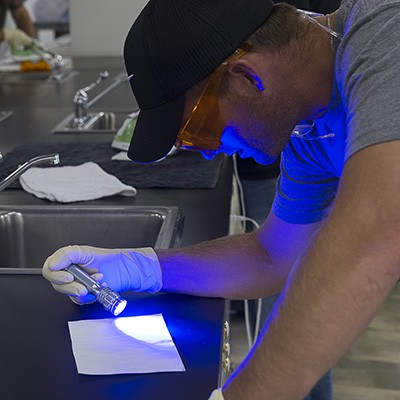

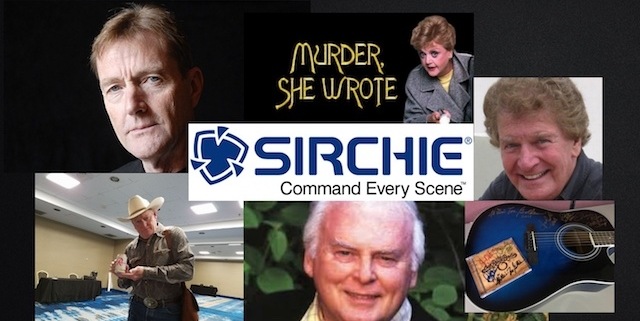
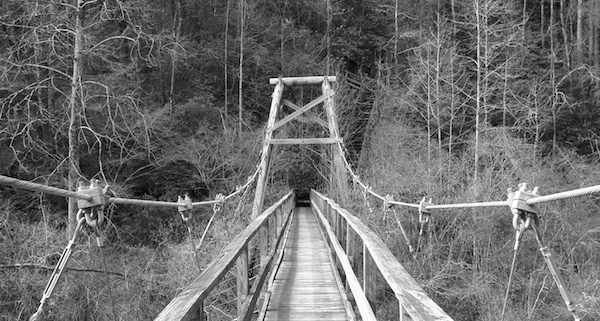
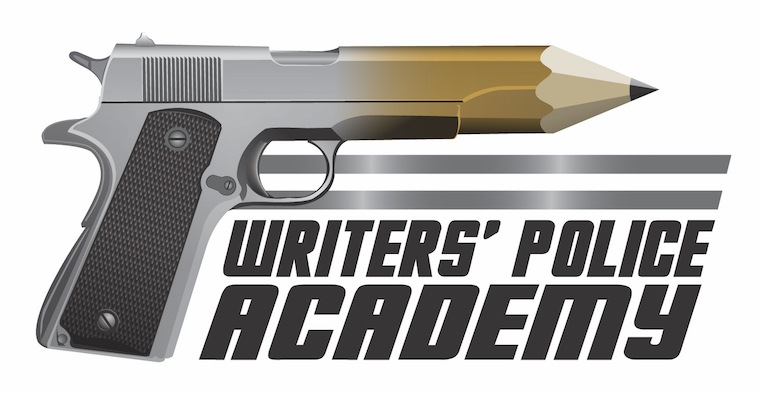 By submitting an entry to this contest authors agree to allow The Graveyard Shift/Lee Lofland, the Writers’ Police Academy and/or affiliates to publish/reprint the story as a part of The Graveyard Shift blog and/or as advertisement for the Writers’ Police Academy or in other publications and media, including, but not limited to, Writers’ Police Academy books, magazines, newspaper, blogs, ebooks, online outlets, etc.
By submitting an entry to this contest authors agree to allow The Graveyard Shift/Lee Lofland, the Writers’ Police Academy and/or affiliates to publish/reprint the story as a part of The Graveyard Shift blog and/or as advertisement for the Writers’ Police Academy or in other publications and media, including, but not limited to, Writers’ Police Academy books, magazines, newspaper, blogs, ebooks, online outlets, etc.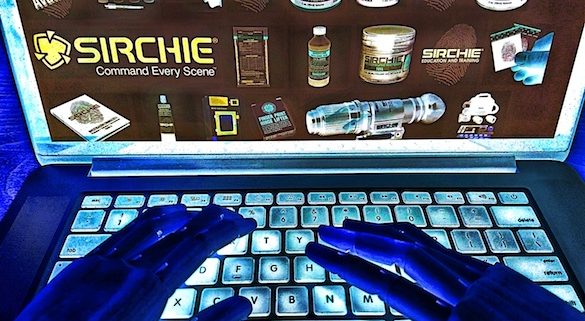
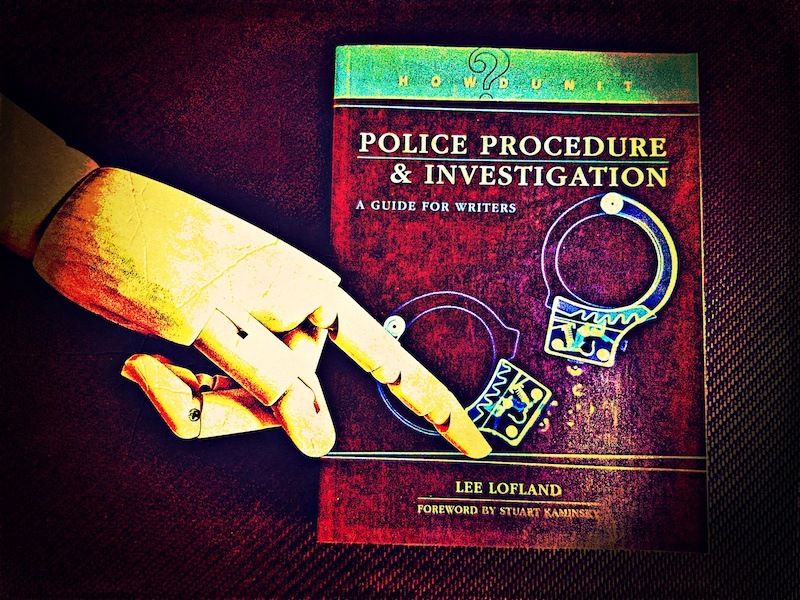
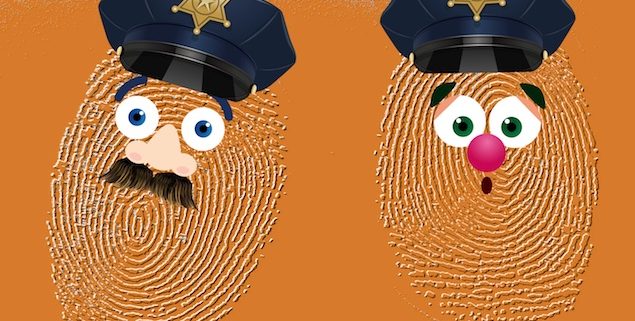



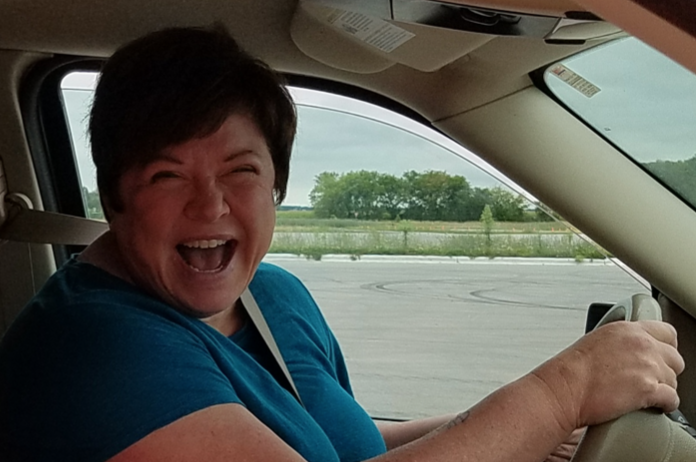
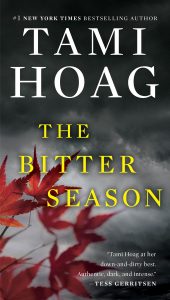
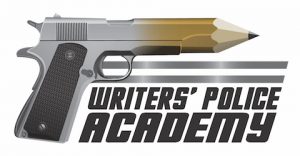



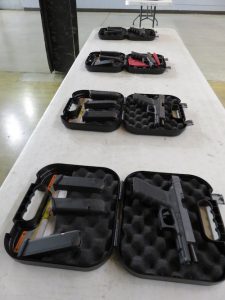 Weapon Selection – Choosing the weapon that’s right for you and your character is important. Shooting is not a one size fits all activity. So shop around until you find the firearm that fits your/their hand, is comfortable in the hand, and one that is easy to handle.
Weapon Selection – Choosing the weapon that’s right for you and your character is important. Shooting is not a one size fits all activity. So shop around until you find the firearm that fits your/their hand, is comfortable in the hand, and one that is easy to handle.
